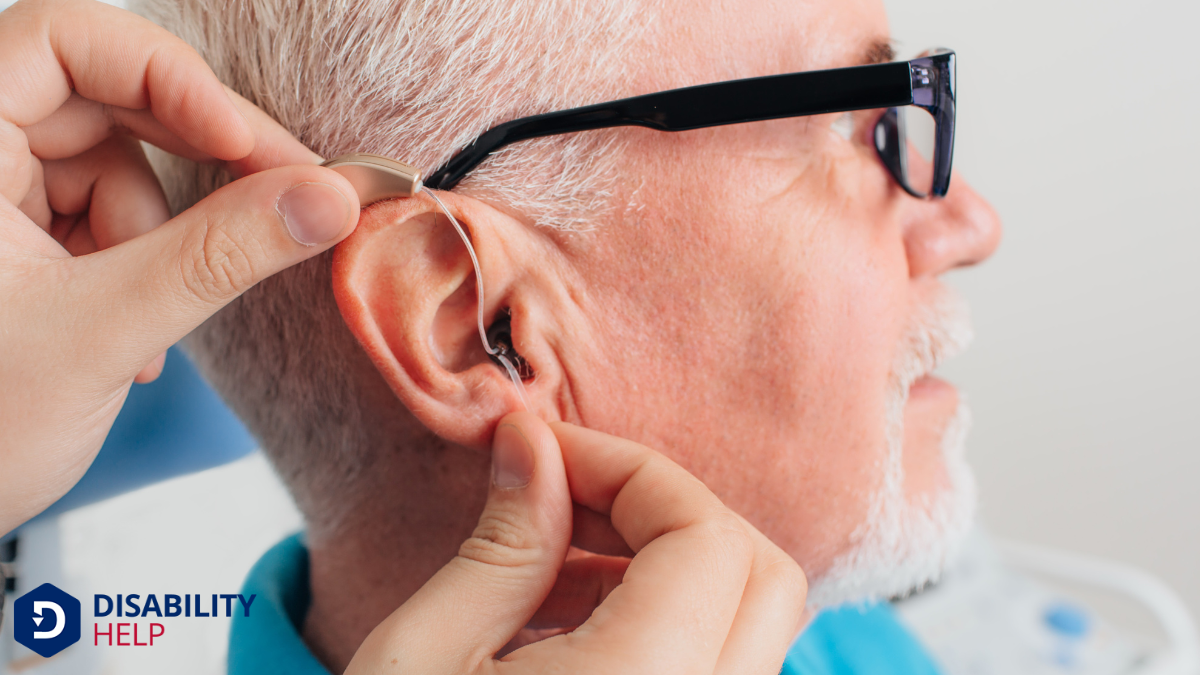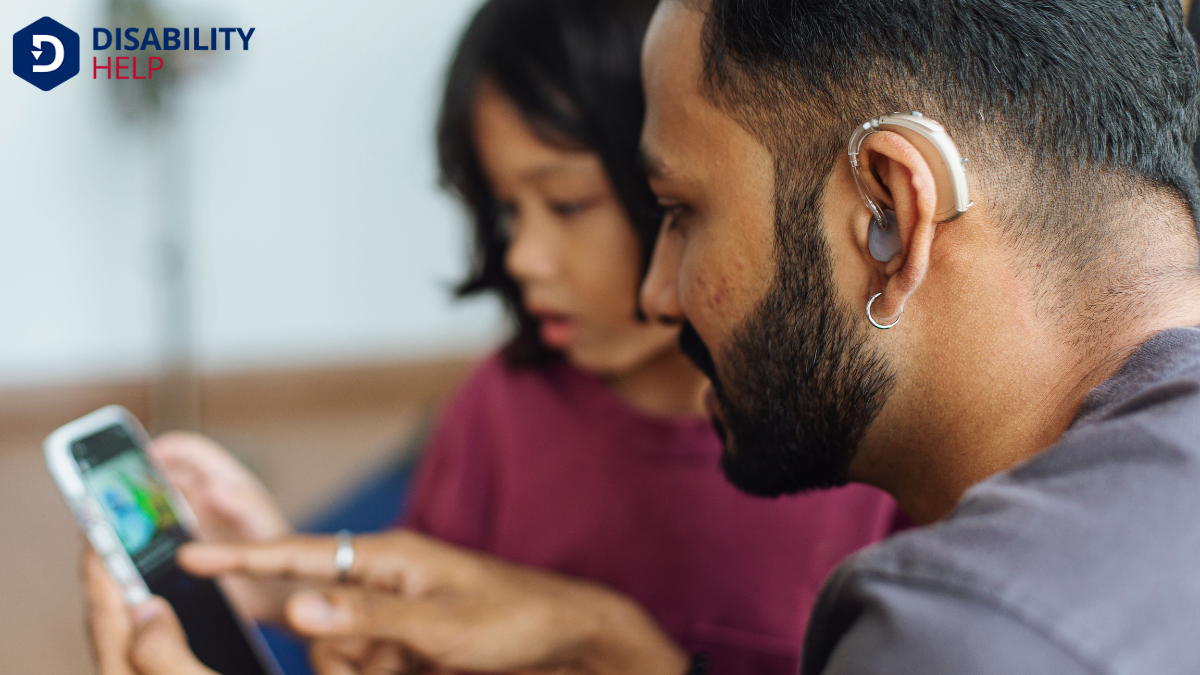Let's explore the key differences between assistive listening devices (ALDs) and hearing aids. While both aim to support those with hearing challenges, they serve distinct purposes. Hearing aids amplify sound for daily use, enhancing overall auditory experiences. On the other hand, ALDs target specific environments, offering clearer sound in places like theaters or classrooms. So, how do we decide which technology suits us best?
Key Takeaways
- Hearing aids amplify ambient sounds for daily communication, while ALDs provide targeted sound delivery for specific environments.
- ALDs can be used independently or with hearing aids to enhance listening in challenging settings.
- Hearing aids include a microphone, amplifier, and speaker to process sounds from all directions.
- ALDs such as FM systems, infrared systemsAssistive listening systems that use infrared light to transmit sound to a receiver, aiding individu..., and induction loops cater to unique listening situations like classrooms or theaters.
- Understanding personal listening needs and environments is crucial for selecting between hearing aids and ALDs.
Understanding Hearing Loss and Its Impact
When we talk about hearing lossPartial or total inability to hear sounds in one or both ears., it’s important to understand both its causes and its effects on daily life.
Hearing loss can stem from various factors like aging, exposure to loud noise, or even genetic conditions. It alters how we interact with the world around us, affecting communication with loved ones, enjoying music, or participating in conversations.
This impact extends beyond mere inconvenience; it can lead to feelings of isolation or frustration.
Overview of Hearing Aids

Hearing aids are essential devices for millions of people experiencing hearing loss, offering a powerful solution to enhance auditory perception. These small electronic devices amplify sound, making it easier for us to engage in conversations, enjoy music, and fully participate in daily activities.
Hearing aids consist of a microphone that picks up sound, an amplifier that increases sound volume, and a speaker that delivers the amplified sound into our ears. They're designed to meet various levels of hearing loss, from mild to profound.
We can customize hearing aids based on individual needs, ensuring they fit comfortably and function effectively. By addressing specific hearing challenges, hearing aids empower us to reconnect with the world around us, improving our quality of life considerably.
Exploring Assistive Listening Devices
While hearing aids offer significant benefits, they're not the only tools available to enhance our auditory experiences.
Assistive Listening Devices (ALDs) provide specific solutions tailored to different listening environments. Let's explore how these devices can enrich our lives.
ALDs include FM systems, infrared systems, and induction loop systems, each designed to improve sound clarity in various settings.
For example, FM systems are great for classrooms, where they transmit a speaker's voice directly to a listener's ear.
Infrared systems work well in theaters, preventing interference from external signals.
Induction loops, often found in public venues, use magnetic fields to deliver sound to those with compatible hearing aids.
Key Differences Between Hearing Aids and ALDs
Although both hearing aids and Assistive Listening Devices (ALDs) aim to enhance auditory experiences, they serve different purposes and operate in distinct ways.
Hearing aids are primarily designed for individuals with hearing loss, amplifying sounds to improve overall hearing. They’re small, wearable devices that process sounds from all directions, aiding daily communication.
In contrast, ALDs target specific listening situations, like lectures or phone calls, providing direct sound delivery. They’re often used in conjunction with hearing aids or on their own by individuals who may not need full-time amplification.
ALDs can include FM systems, infrared systems, and loop systems, each tailored for specific environments. Understanding these differences helps us make informed decisions about which device best suits our unique auditory needs.
Choosing the Right Technology for Your Needs

Let's start by evaluating our typical listening environments to determine whether assistive listening devices or hearing aids suit us best.
We should also consider our personal preferences, like comfort and ease of use, as these will affect our satisfaction with the technology.
Evaluate Listening Environments
Choosing the right technology for your hearing needs begins with evaluating your listening environments.
Let’s consider where we spend most of our time. Are we in bustling coffee shops, quiet libraries, or lively family gatherings? Each setting presents unique challenges for sound clarity.
In noisy places, background noise can overwhelm, making conversations difficult. At home, we might need different support when watching TV or speaking with family.
Consider Personal Preferences
When selecting the right hearing technology, it’s essential to factor in our personal preferences alongside our specific hearing needs.
We should consider how comfortable we feel wearing a device in public or during social interactions. Some of us might prefer a discreet device, while others value advanced features more—even if they’re more noticeable.
Battery life can be another vital consideration; do we want something rechargeable or are we comfortable with changing batteries frequently?
Let’s also think about how technology integrates into our daily lives. Do we prefer devices that connect effortlessly with our smartphones or TVs?
Understanding our lifestyle can guide us in choosing a device that not only meets our hearing needs but also aligns with how we live and interact with the world.
Situations Where ALDs Are Most Beneficial
Although hearing aids provide essential support for many, assistive listening devices (ALDs) shine in specific situations where traditional aids might fall short.
In environments with significant background noise, like restaurants or busy meetings, ALDs can enhance speech clarity by reducing interference. They’re also invaluable in large venues, such as theaters or lecture halls, where distance from the sound source can challenge hearing aids.
ALDs often integrate with public address systems, directly transmitting clear audio to the listener. Additionally, they’re useful for watching TV or talking on the phone, offering tailored sound output.
For those of us attending worship services or educational classes, ALDs guarantee we don’t miss vital information, bridging the gap when hearing aids alone aren’t enough.
The Future of Hearing Assistance Technologies
As we look to the future of hearing assistance technologies, it's clear that innovation will continue to transform how we experience sound.
We're witnessing rapid advancements in artificial intelligence and machine learning that promise smarter, more personalized devices. These technologies can adaptA grassroots disability rights organization in the U.S. that focuses on promoting community-based se... to our environments, automatically adjusting to optimize sound quality.
Moreover, connectivity will play an essential role. Devices will seamlessly integrate with smartphones and other smart home technologies, making our lives more convenient.
Imagine having a hearing aid that can stream music, answer calls, or even translate languages in real-time.
Additionally, the push for miniaturization means devices will become less intrusive and more comfortable.
As these technologies evolve, we’ll gain more control over our auditory experiences, enhancing not just hearing but overall quality of life.
Conclusion
In our journey to understand hearing assistance, we've seen how hearing aids and assistive listening devices serve unique roles. Hearing aids amplify sounds for everyday communication, while ALDs enhance listening in specific environments like theaters or classrooms. Choosing the right technology depends on your needs and settings. As technology advances, we're excited about the future possibilities in this field, ensuring everyone can enjoy clearer, more accessible listening experiences. Let's embrace these innovations together!






